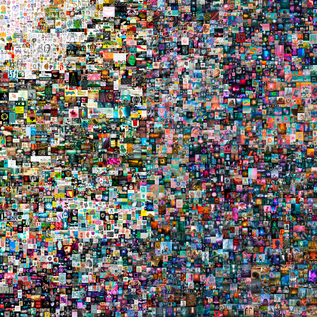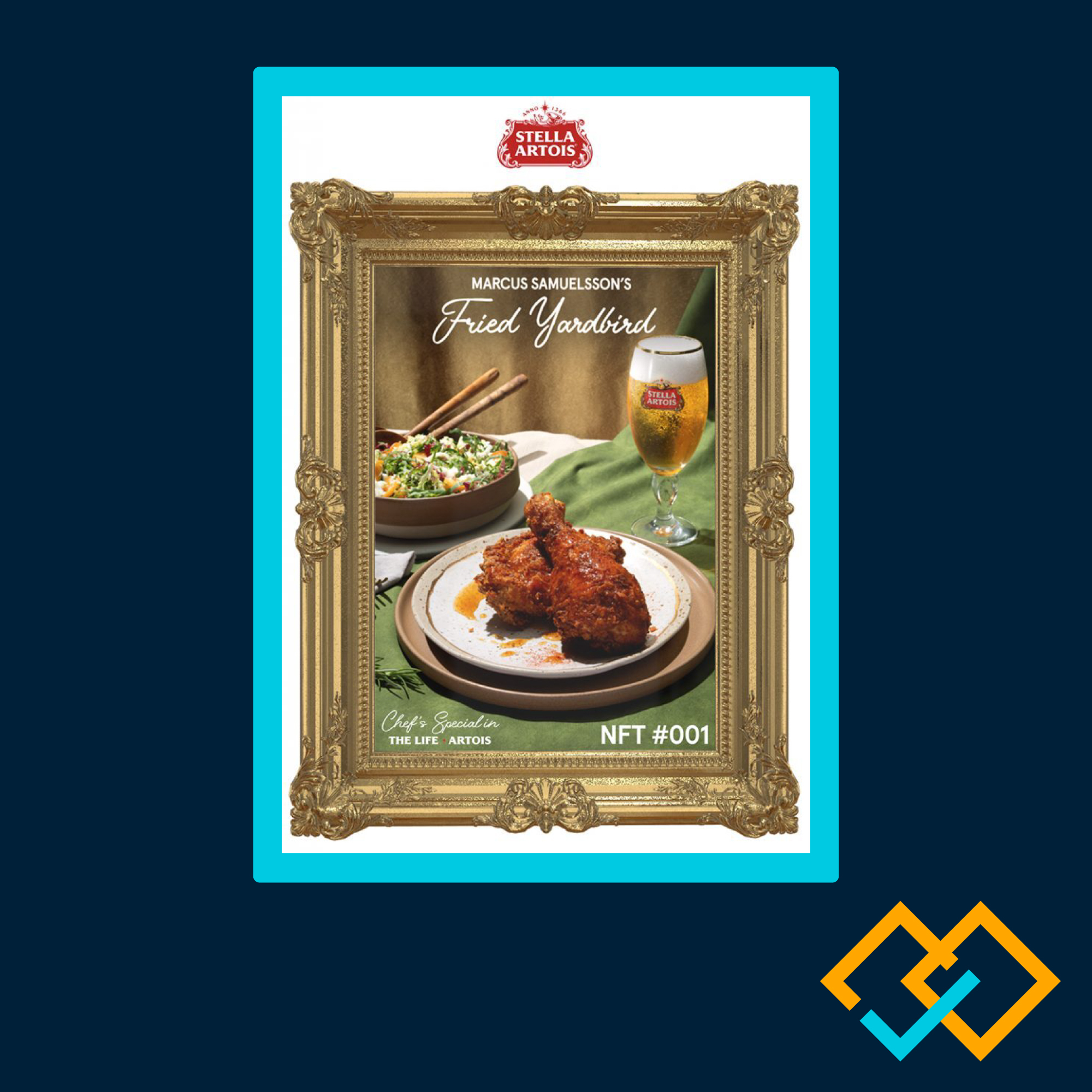NFTs is coming to the Arts world.
:format(webp)/cdn.vox-cdn.com/uploads/chorus_image/image/70264946/bored_ape_nft_accidental_.0.jpg)
What is NFTs?
“NFTs are tokens that can signify ownership of individual items. They permit us to tokenize objects such as art, collectibles, and even property. NFTs could only have one legitimate owner at a time and are protected by the Ethereum blockchain; no one can alter the possession record or create a new NFTs. The abbreviation NFT stands for non-fungible token. The economic term non-fungible could be used for your furniture, a music file, or your computer. These goods cannot be substituted for others due to their distinct characteristics. In contrast, the exchangeability of fungible goods is determined by their value, not their distinctive qualities. ETH and dollars, for instance, are fungible because 1 ETH / $1 USD can be swapped for 1 ETH / $1 USD.”
No two NFTs are identical from a digital standpoint. Every non-fungible token is required by one owner, whose identity is public record and easy to identify. NFTs are interoperable with anything produced on the Ethereum blockchain. “A ticket issued in the form of a non-fungible token (NFT) can be exchanged for a different NFT on any Ethereum marketplace. One could exchange a work of art for a ticket. Creators of content are able to reach a worldwide market and sell their work anywhere. Creators can keep ownership rights over their own work and receive royalties from resale transactions directly. Uses for objects can be unexpected. In a decentralized loan, for instance, digital artwork can serve as collateral.”
How NFTs change the Art industry
Nowadays, NFT has evolved as a technology that can conclusively verify the authenticity of the original digital artwork. The artist can generate a non-fungible token (NFT) for his digital art, which will produce an unalterable and irreversible record on the Blockchain, certifying the art as original and one-of-a-kind. This artwork can also be monetized through NFT by the artists. Using NFT marketplaces, he can sell his NFTs straight to a buyer.
Accessibility
NFTs help makes it easier for beginners and customers to enter the market. For instance, an unnamed 12-year-old can create NFTs of pixel whales. And, he also managed to sell them online for over $400,000. On top of that, people all over the world are buying these whales. When it comes to traditional art, only a few communities have access to these paintings, which are mostly sold at auction houses. Compared to traditional markets that are difficult to access, NFT art is global and accessible to everyone.
Transaction
“NFTs have revolutionized the way transactions are done in an industry that is largely unregulated given the amount of money flowing through it. Because the blockchain network creates a permanent record of all transactions related to a particular NFT, NFTs are able to bring change to this largely unregulated space. In doing so, the blockchain creates a contract, called a “smart contract,” which is protected by cryptography. The contract contains information about the primary market for NFTs, including the creator and first purchaser, as well as information about their subsequent changes in ownership and valuation.”
Transparency
This information’s accessibility to the public enables the development of a decentralized and transparent marketplace for artists. This is in stark contrast to the traditional art market, which has prospered without transparency, with commercial galleries, dealers, and auctioneers capturing the majority of revenues. With the emergence of NFTs, artists, particularly underrepresented ones, have discovered equitable opportunities by obtaining pricing and supplying information pertinent to their artwork in exchange for certifying it on the blockchain. Collectors also benefit from the system because they can verify the authenticity of dealers and compare pricing.
NFTs Application in Art Industry
NFTs are widely used in different artistic fields, such as painting, photography, and music production. Here are some examples:
The combination of painting: “Everydays: the First 5000 Days” is a digital artwork produced by Mike Winkelmann, also known as Beeple, and depicting the first 5000 days of his life. The piece is a collage of 5,000 digital pictures that Winkelmann generated for his Everydays series and assembled into a single composition. In 2021, the non-fungible token (NFT) connected with it sold at Christie’s for $69.3 million, making it the second most valuable non-fungible token on the market.

The photo “Love is War” created by Aimos Vasquez is sold for $125,000 which means 40ETH.

Music NFTs sold by Grimes and Steve Aoki are worth millions. Grimes made $6 million in 20 minutes thanks to Gemini’s NFT marketplace, Nifty Gateway. With the sale of a collection of ten exclusive digital artworks, which included some that featured original music, the Canadian singer made $5.8 million. WarNymph Collection, Vol. 1 was the title. Steve Aoki, an electronic DJ and producer, released his first NFT album, Dream Catcher, a week later on the same site. For $4.25 million, it was sold Antoni Tudisco, a renowned visual artist, collaborated on Dream Catcher’s 11 distinct artworks. Unique sound effects and visually stunning animation rounded out the package. The Weeknd (whose NFT collection sold for $2 million) and Eminem (who made $1.78 million from his first collection of NFTs) were able to make seven-figure sales on the platform because of their early sales.
NFTs Royalty
As we all know, royalty is a very important thing for artists, and NFT happens to give artists a good guarantee on the issue of royalties.
A part of the sale price of your NFT creation is paid out to you as NFT royalties. Smart contracts perform NFT royalty payments on an ongoing basis. You have a lot of options when it comes to marketplaces, including the ability to customize your royalty portion. A normal royalty is between 5% and 10%. For instance, In February, when “Crossroads” by the digital artist Beeple was resold on the secondary market for $6.6 million, more than 100 times its original sale price, Beeple received a 10 percent royalty from the transaction.
Another example is how difficult it is for most musicians to earn money in the age of streaming. Artists get cents per stream and must maintain or cultivate a significant audience in order to make a living. According to data from 2019 and 2020, ninety percent of live streaming went to the top one percent of performers. Even a modestly popular musician like Daniel Allan, whose songs received millions of listens in 2020, can only make a few hundred dollars a month from streaming, which necessitates He supported himself by mixing and mastering the music of other artists. Allan has been selling digital versions of his electro-pop tunes in the form of NFTs (non-fungible tokens) for thousands of dollars apiece, because of the influence of COVID-19. In addition, Allen’s use of NFTs enables him to collect more royalties than record labels and streaming giants. NFT provides musicians with greater independence and financial support from fans, as well as greater communication with followers. NFTs are a breakthrough for artists who are being squeezed by brokerage businesses, in my opinion.
NFTs Art Market
At a cumulative annual growth rate (CAGR) of 52.1%, the global market for non-fungible tokens is anticipated to increase from $14.02 billion in 2021 to $21.33 billion in 2022. At a CAGR of 40.2%, the market is estimated to reach $82.43 billion in 2026.
According to some industry sources, sales of art and collectibles through non-transferable titles exceeded $23 billion. In the last year, the size of the NFT art market expanded by $41 billion. It can be seen that people still have great enthusiasm for the NFT art market.
The non-fungible token (NFT) market is predicted to increase by $147.24 billion between 2021 and 2026. Over the forecast period, the market is expected to develop at a strong CAGR of 35.27 percent. This increase can be attributable to an increase in demand for digital artwork. However, uncertainty in the NFT sector may stifle growth in the next years.
NFTs Future Prediction
NFTs is still a controversial topic. Some people think that NFT is just a short-lived trend. In other words, it is a manifestation of people trying to catch up with the trend. Some argue that the energy use and carbon emissions associated with their use offset any potential benefits they might gain. However, many others believe they bring value and innovation to many different industries, from the obvious (like gaming and anything involving the metaverse) to less obvious use cases (like real estate, healthcare, and insurance. Although NFT is now widely used in the field of art, it is expected that we can see some new applications in the future, such as in restaurants. An entrepreneur is constructing a restaurant where NFT ownership is necessary prior to dining. The NFT will grant consumers access to the restaurant in 2022, which will have a cocktail bar and a private dining experience. Vaynerchuk is hardly the only restaurant that is experimenting with digital cuisine. Red Rooster in Harlem, which is owned by celebrity chef Marcus Samuelsson, is also exploring the space. He produced an NFT that can be redeemed for a private supper for four, along with a piece of art that ingeniously depicts the chef’s fried chicken. Like many chefs, Samuelsson hopes that the culinary arts will not be left behind in the world’s digital transformation.

In the end, let us look forward to the future development of NFTs jointly.
Bibliography
Arjun Seth. “The Impact of Nfts on the Art Industry.” The Bull & Bear, February 3, 2022. https://bullandbearmcgill.com/the-impact-of-nfts-on-the-art-industry/.
AlexWGomezz. “NFT Royalties: What Are They and How Do They Work?” Cyber Scrilla. Cyber Scrilla, December 2, 2021. https://cyberscrilla.com/nft-royalties-what-are-they-and-how-do-they-work/.
Bloomberg.com. Bloomberg. Accessed May 6, 2022. https://www.bloomberg.com/news/articles/2022-01-06/nft-market-surpassed-40-billion-in-2021-new-estimate-shows.
Chow, Andrew R. “Can Nfts Challenge the Traditional Music Industry?” Time. Time, December 2, 2021. https://time.com/6124814/music-industry-nft/.
Christies. “Beeple (b. 1981).” Christies.com. Accessed May 6, 2022. https://onlineonly.christies.com/s/first-open-beeple/beeple-b-1981-1/112924.
“Global Non-Fungible Token Market Report 2022: Compound Annual Growth Rate of 40% Forecast between 2021-2026 – Researchandmarkets.com.” Yahoo! Yahoo! Accessed May 6, 2022. https://www.yahoo.com/now/global-non-fungible-token-market-101700540.html.
Herrera, Pedro. “2021 DAPP Industry Report.” DappRadar Blog RSS, April 1, 2022. https://dappradar.com/blog/2021-dapp-industry-report.
“How Do NFT Royalties Work?” TalksOnLaw. Accessed May 6, 2022. https://www.talksonlaw.com/briefs/how-do-nft-royalties-work.
“How NFT Can Transform the Art Industry?” Merehead, December 11, 2021. https://merehead.com/blog/nft-can-transform-the-art-industry/.
Marr, Bernard. “The Biggest Future NFTS Trends Everyone Needs to Know About.” Forbes. Forbes Magazine, March 17, 2022. https://www.forbes.com/sites/bernardmarr/2022/01/31/the-biggest-future-nfts-trends-everyone-needs-to-know-about/?sh=39d1e44a3d09.
“NFT (Non-Fungible Token).” LeewayHertz, May 6, 2022. https://www.leewayhertz.com/nft-non-fungible-token/.
“Non-Fungible Tokens (NFT).” ethereum.org. Accessed May 6, 2022. https://ethereum.org/en/nft/.
Shenkler, Sam, Mos Neammanee, Claude J. Easy, Padma Yang, Sophie McNally, and Kulture Hub Squad. “5 Photographers Who Are Making Big Eth from Nfts.” Kulture Hub, August 17, 2021. https://kulturehub.com/photographers-big-eth-from-nfts-list/.
Technavio. “Non-Fungible Token (NFT) Market Size to Grow by USD 147.24: | Technavio.” Non-fungible Token (NFT) Market Size to grow by USD 147.24 | | Technavio, April 21, 2022. https://www.prnewswire.com/news-releases/non-fungible-token-nft-market-size-to-grow-by-usd-147-24—-technavio-301529125.html.
“The Top NFT Music Moments of All Time.” nft now, April 1, 2022. https://nftnow.com/music/top-music-nft-moments/.
[##]Cliente. “10 NFT Future Use Cases – Identity Review.” Identity Review | Global Tech Think Tank, March 10, 2022. https://identityreview.com/10-nft-future-use-cases/.